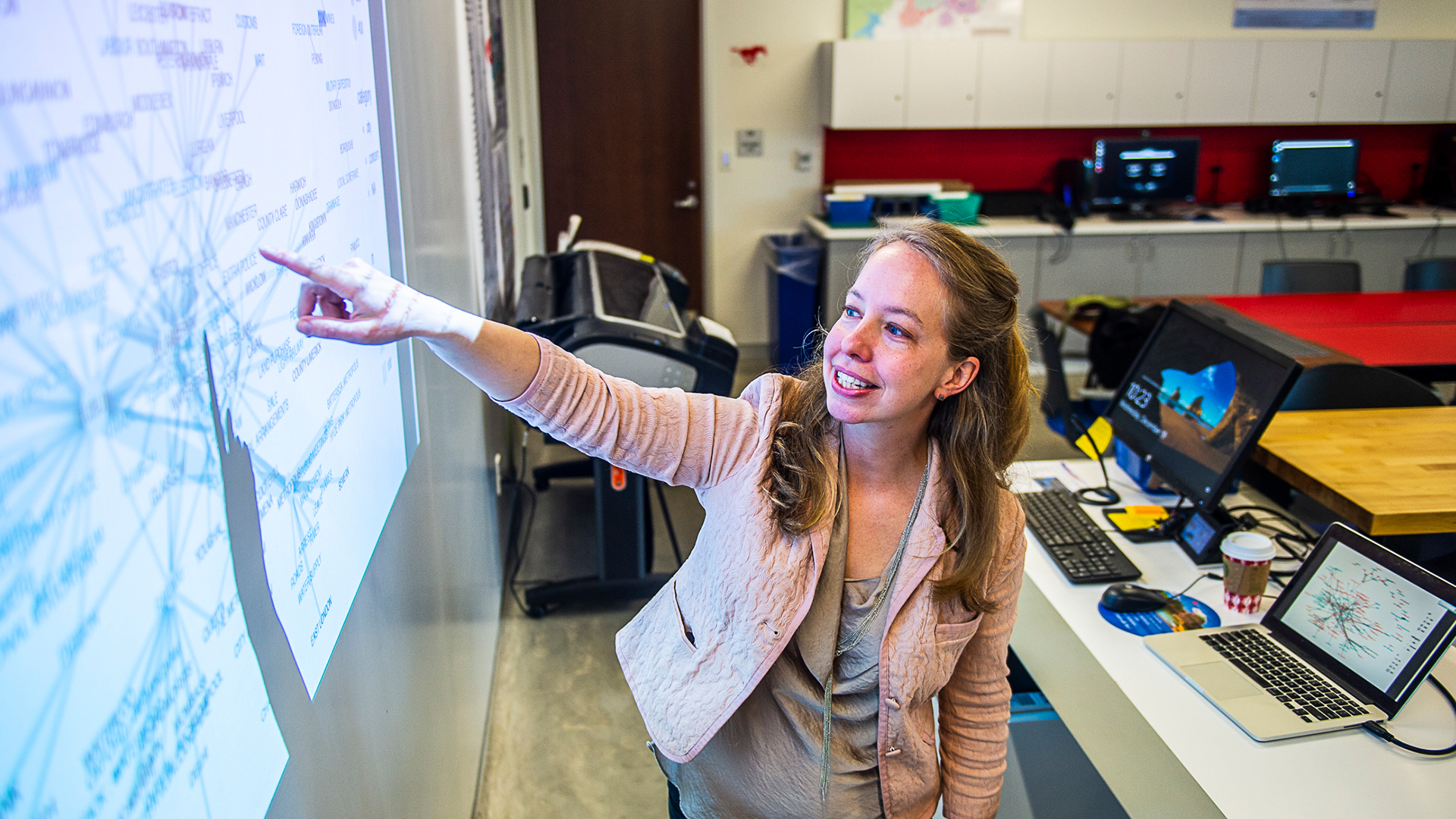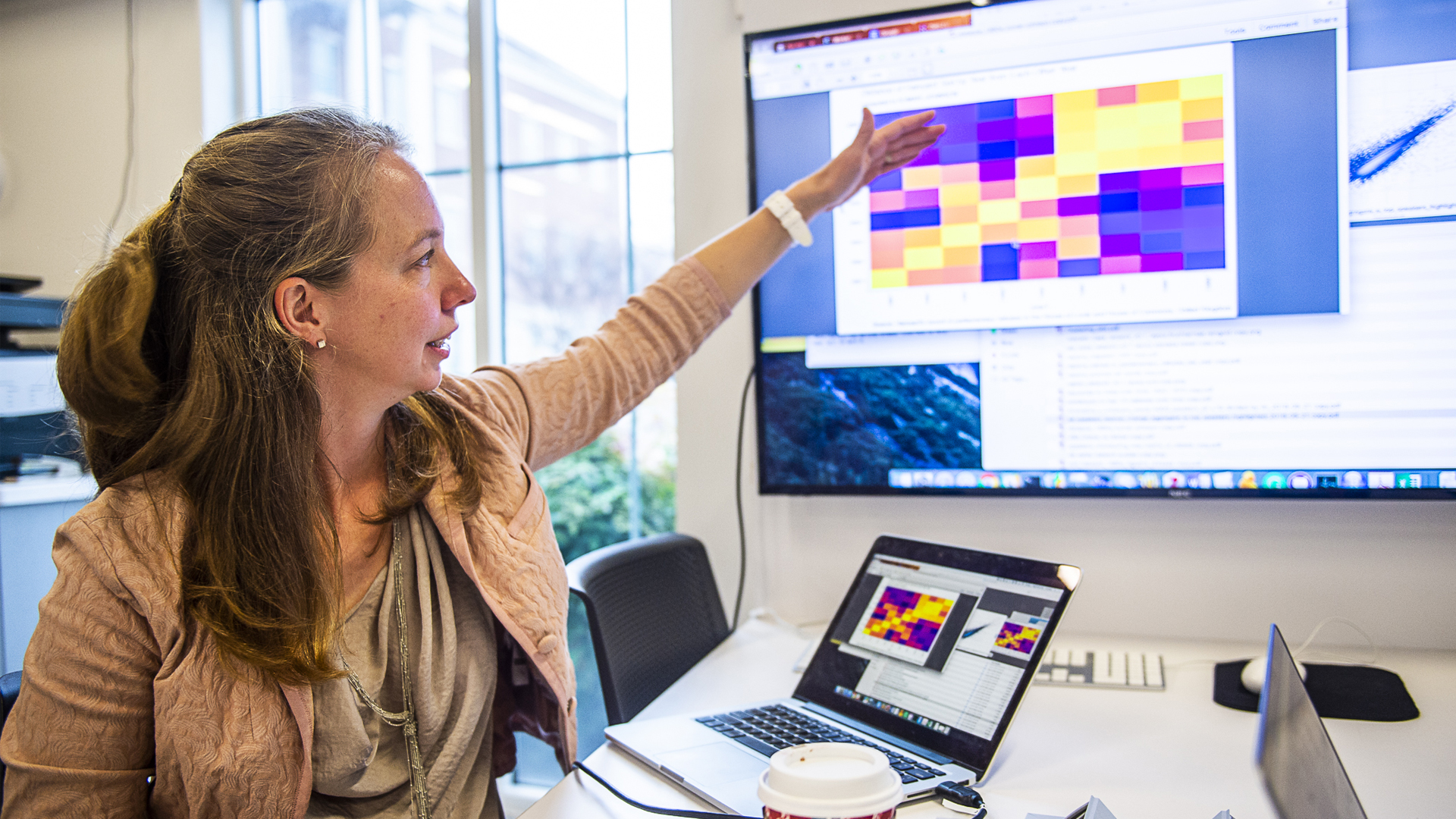SMU History Professor Paves a Digital Path to the Past
SMU history professor Jo Guldi’s book, The History Manifesto, recently was named one of the most influential books of the past 20 years by the Chronicle of Higher Education.
DALLAS (SMU) – SMU history professor Jo Guldi’s book, The History Manifesto (Cambridge University Press, 2014), recently was named one of the most influential books of the past 20 years by the Chronicle of Higher Education. Writing with Harvard’s David Armitage, she argues that historians need to shed their enthusiasm for micro-history and return to examining history’s big picture to better influence the future.
Guldi and Armitage propose that historians embrace new technology as the key to analyzing the grand scope of history in ways that were not possible before. Supercomputing capable of sorting daunting amounts of data encourages scholars to synthesize information in new ways, seeing things that do not emerge in the close examination of single decades.
“Applying computer technology to research empowers historians to step back, analyze longer periods of time and search for trends and patterns that might otherwise remain hidden,” Guldi says. “It revolutionizes how we work.”
Algorithms, big data and data text mining are key to the historian’s new digital toolbox, she says Using these tools, and at SMU, the University’s supercomputer, ManeFrame, researchers can now interpret long-term historical trends and giant topics like inequality, capitalism and climate change in ways that were impossible before the emergence of search technology.
For example, an algorithm can read and search billions of words, millions of books and 200 years of digitized newspapers, Guldi says. For her own research on property rights in 19th century England, she used an algorithm that text-mined 100 years of British Parliamentary debates to better understand the history of eviction.
Macro-research vs. Micro-research
Digital analysis contrasts with trends in history scholarship that developed in the late 20th century. Beginning in the 1970s historians focused on micro-history, a deep dive into archives covering 10 - to -20 - year time periods. In response to civil rights, women’s and labor movements of the 1960s and ‘70s, this included new research that retrieved lost voices, such as the interpretation of a long-lost slave narrative, or a woman preacher’s journal, Guldi says.
“Micro-history totally transformed how we understand the past, and events such as the Civil War,” Guldi says. “But, in focusing on the trees, we neglected to inspect the forest around the trees and narrate how these lost voices relate to the great sweep of long-term history.”
Hometown historian
Guldi was one of the first historians to embrace digital analysis of history, filling the first faculty position in digital humanities offered in 2008 by the University of Chicago. A Dallas native, Guldi was uniquely suited for the job. She grew up in the shadow of the region’s Telecom Corridor, home to tech giants such as Texas Instruments, Ericsson and Verizon. Like many other students in the area, she was the child of technology professionals and, like her friends, learned to code computers before she graduated from high school in 1996.
“My mother gave me her BASIC introduction to computer programming manual when I was eight and told me to read it for myself,” she says.
She also spent long hours in SMU’s Hamon Arts library, however, while her mother, a computer programmer, worked on a master of fine arts degree. There she met the legendary SMU medieval history professor Jeremy Adams. He invited her to audit his classes and became a mentor to the then 17-year-old. Adams died in May 2016, but his thoughts about the relevance of the humanities to the present and perspective of ancient wisdom to current struggles influenced the nucleus of The History Manifesto.
Guldi completed her undergraduate degree at Harvard, then studied at Trinity College, Cambridge, and earned her PhD in history at the University of California, Berkeley. She completed postdoctoral fellowships at the University of Chicago and the Harvard Society of Fellows. Before joining the SMU faculty in 2016, she was the Hans Rothfels Assistant Professor of History at Brown University.
Now an SMU associate professor of history in the same department as her mentor, Adams, Guldi has created and offered free five-week courses on data text mining, which quickly fill with faculty members, graduate students, librarians and staff. She teaches researchers how to use digital techniques such as topic modeling, distant reading and the visual representative of data to research history.
This spring she is leading several hackathons where undergraduate students will use data text mining to analyze Dallas infrastructure inequality, rare books from SMU’s Bridwell Library and New Mexico archeological finds from SMU-in-Taos.
Her undergraduate British history class, “Britain and the World,” is designed to attract history, business and engineering students. In the class she pairs history and tech students to work on social, political and economic research projects. Together they use technology and context to examine British history in a new way.
“Higher education has long emphasized the importance of teaching critical thinking,” she says. “It also is important to teach students the skill of critical searching.”
About SMU
SMU is the nationally ranked global research university in the dynamic city of Dallas. SMU’s alumni, faculty and nearly 12,000 students in seven degree-granting schools demonstrate an entrepreneurial spirit as they lead change in their professions, communities and the world.

